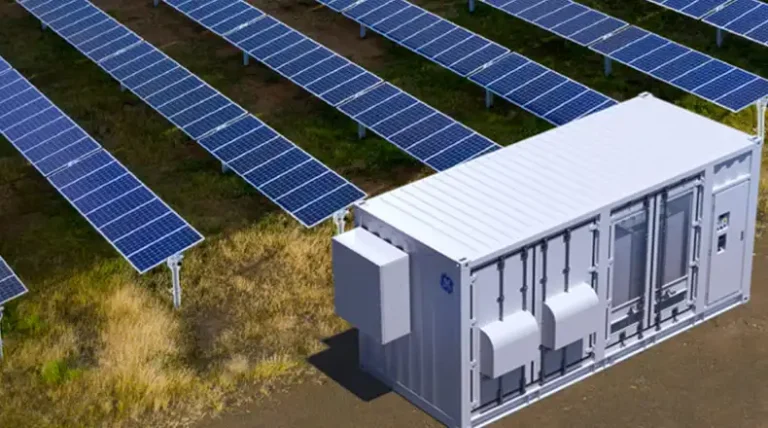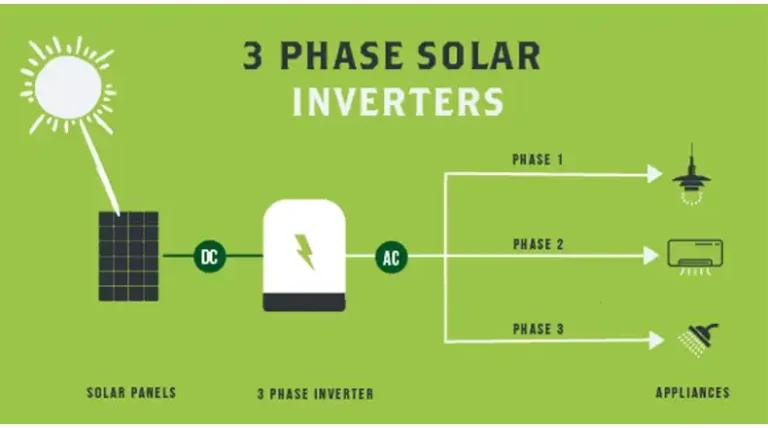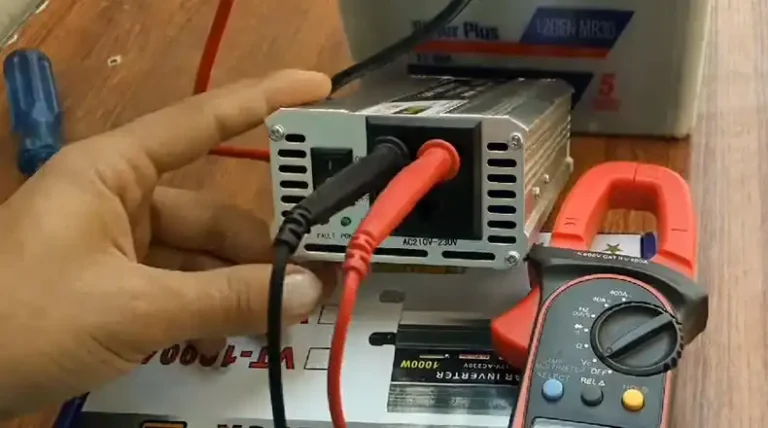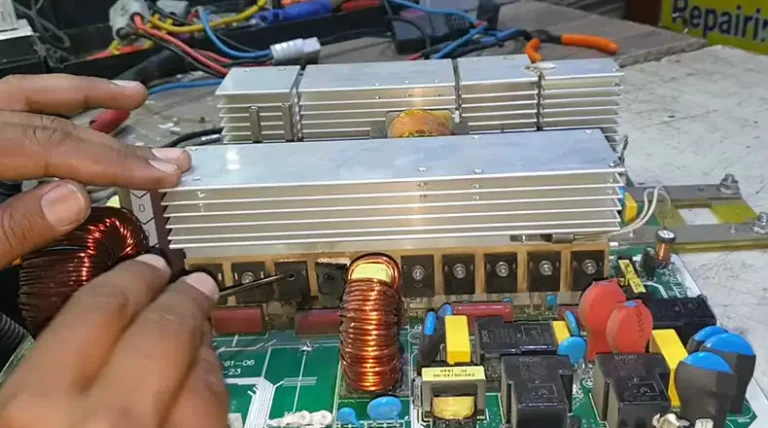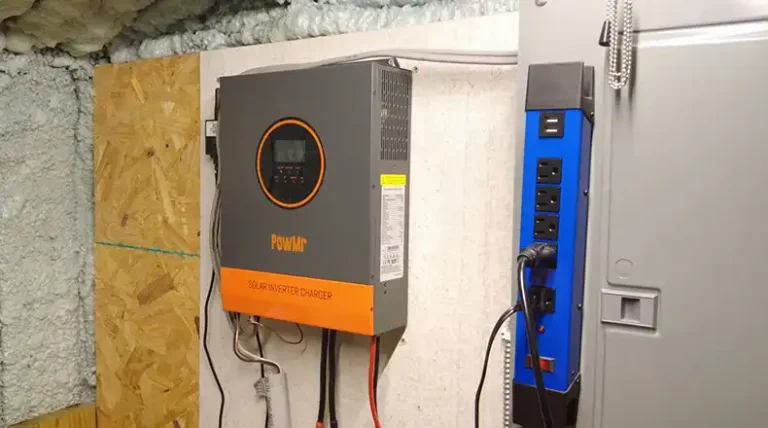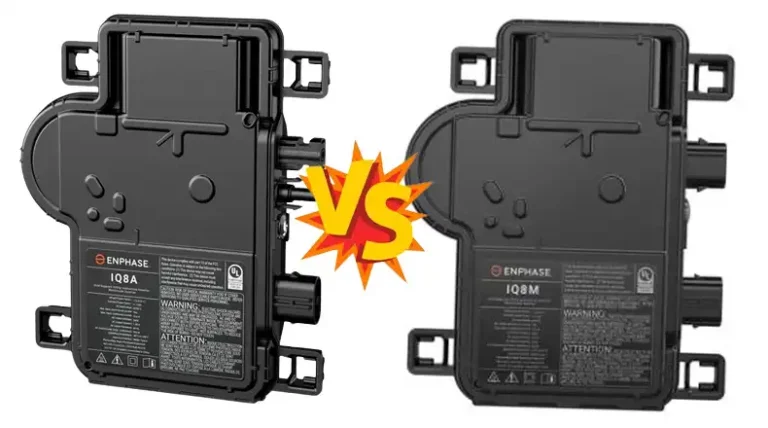How Much Power Does an 850 VA Inverter Use?
Knowing the power consumption of an inverter is crucial when designing and operating off-grid or backup power systems. It helps determine the appropriate battery bank size, solar panel capacity, and overall system efficiency.
While the VA (Volt-Ampere) rating indicates the inverter’s capacity, it does not directly translate to the actual power consumption in watts. In this article, we’ll explore the key concepts and calculations involved in estimating the power consumption of an 850 VA inverter.
The short answer is that an 850 VA inverter can consume anywhere from around 15 watts (idle power consumption) to over 700 watts (under full load), depending on various factors such as inverter efficiency, power factor, and the connected load.
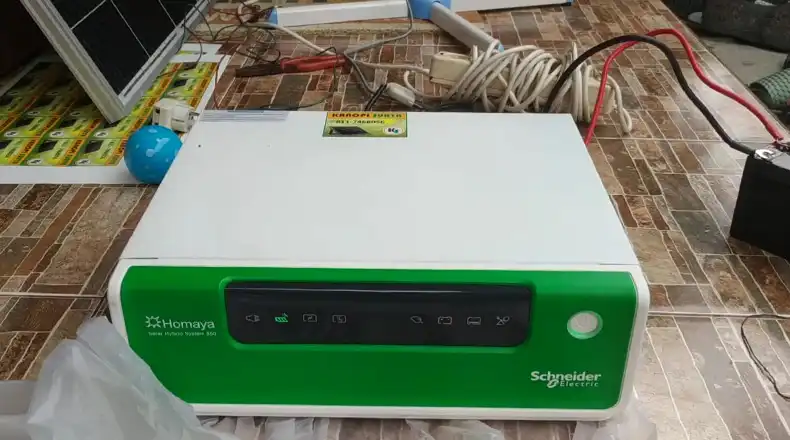
Key Concepts for Calculating 850 VA Inverter Power Consumption
To accurately estimate the power consumption of an 850 VA inverter, it’s essential to understand the following key concepts.
VA Rating
The VA (Volt-Ampere) rating is a measure of the inverter’s capacity to handle electrical loads. It indicates the maximum load the inverter can support, but it does not directly represent the actual power consumption in watts. For example, an 850 VA inverter can handle loads up to 850 watts, assuming a power factor of 1 (more on power factor later).
Power Factor
The power factor is the ratio of real power (measured in watts) to apparent power (measured in volt-amperes, VA). It represents how effectively the electrical load utilizes the supplied power. A power factor of 1 indicates that all the supplied power is being used efficiently, while a lower power factor means that some power is being wasted due to reactive loads (e.g., inductive motors, transformers).
Most household appliances and electronics have a power factor ranging from 0.6 to 0.95. The lower the power factor, the more apparent power (VA) is required to deliver the same amount of real power (watts).
Power Consumption
The power consumption of an inverter refers to the amount of power (in watts) used by the inverter itself to operate and convert DC power from batteries or solar panels into usable AC power. This power consumption is influenced by factors such as the inverter’s efficiency, the connected load level, and the power factor of the load.
Estimating Power Consumption of 850 VA Inverter
To estimate the power consumption of an 850 VA inverter, you can use either the inverter’s efficiency or the power factor of the connected load.
Role of Inverter Efficiency
Inverter efficiency is a measure of how effectively the inverter converts DC power from the battery or solar panels into usable AC power. Typical inverter efficiencies range from 85% to 90% for most modern inverters.
The power consumption of the inverter can be calculated using the following formula –
Power consumption (Watts) = VA rating / Efficiency
For example, if an 850 VA inverter has an efficiency of 90%, the power consumption would be –
Power consumption = 850 VA / 0.9 ≈ 944.44 Watts
This means that the inverter itself would consume around 944.44 watts to provide an output of 850 watts (assuming a power factor of 1).
Calculation Method using Power Factor
Alternatively, you can estimate the real power consumption (in watts) by considering the power factor of the connected load. The formula for this calculation is –
Real Power (Watts) = VA rating × Power Factor
For example, if the connected load has a power factor of 0.7, the real power consumption of an 850 VA inverter would be –
Real Power = 850 VA × 0.7 = 595 Watts
In this case, the inverter would consume around 595 watts to power the connected load, assuming the load has a power factor of 0.7.
What to Consider While Calculating 850 VA Inverter Power Consumption?
It’s important to note that the calculations provided are based on estimated values, and the actual power consumption may vary depending on several factors –
- The efficiency of the inverter can fluctuate based on factors such as temperature, age, and the quality of the inverter.
- The power consumption of the inverter increases as the connected load increases. At higher loads, the inverter operates less efficiently, resulting in higher power consumption.
- Even when no load is connected, the inverter consumes a small amount of power, typically ranging from 10 to 20 watts, for internal circuitry and standby operations.
Examples of Power Consumption with Load
To better understand the impact of load on power consumption, let’s consider the following examples –
No Load
When no load is connected, the inverter consumes only the idle power consumption, which is typically around 10-20 watts.
Half Load (e.g., 300 watts connected)
If the connected load is 300 watts, the total power consumption would be the sum of the load and the inverter’s losses due to efficiency –
Total consumption = Load + Inverter Losses (efficiency)
= 300 watts + 30-45 watts (losses)
≈ 330-345 watts
Full Load (e.g., 595 watts connected)
At full load, assuming a power factor of 0.7 and an 850 VA inverter, the total power consumption would be –
Total consumption = Load + Inverter Losses (efficiency)
= 595 watts + 55-100 watts (losses)
≈ 650-700 watts
Key Takeaways
- The VA rating provides a guideline for the inverter’s capacity but does not directly indicate the actual power consumption in watts.
- To estimate power consumption, consider factors such as inverter efficiency, load level, and the power factor of the connected load.
- Typical inverter idle power consumption ranges from 10 to 20 watts.
- At full load (595 watts for an 850 VA inverter with a power factor of 0.7), the total power consumption can reach up to 650-700 watts, depending on the inverter’s efficiency.
- Use the provided formulas and examples to estimate the power consumption for your specific inverter and load conditions.
Related FAQs
Can I use an 850 VA inverter to power appliances with a higher wattage rating?
While an 850 VA inverter can theoretically handle loads up to 850 watts (assuming a power factor of 1), it’s generally not recommended to operate the inverter at its maximum capacity for extended periods. This can lead to overheating, reduced efficiency, and potentially shorter lifespan.
How does ambient temperature affect the power consumption of an 850 VA inverter?
Ambient temperature can have a significant impact on the power consumption of an inverter. Higher temperatures can cause the inverter to operate less efficiently, resulting in increased power consumption. Conversely, lower temperatures can improve efficiency and reduce power consumption.
Can I use multiple 850 VA inverters in parallel to increase capacity?
Yes, it is possible to use multiple 850 VA inverters in parallel to increase the overall capacity of your system. However, this approach requires careful planning and implementation to ensure proper load sharing and synchronization between the inverters.

